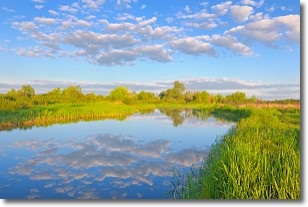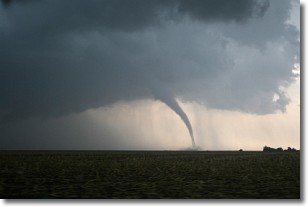Weather Alert in Oklahoma
Flood Warning issued April 29 at 11:06AM CDT until May 1 at 10:54AM CDT by NWS Norman OK
AREAS AFFECTED: Jefferson, OK
DESCRIPTION: ...The National Weather Service in Norman OK has issued a Flood Warning for the following rivers in Oklahoma... Beaver Creek at Waurika affecting Jefferson County. * WHAT...Moderate flooding is forecast. * WHERE...Beaver Creek at Waurika. * WHEN...From Wednesday morning to late Thursday morning. * IMPACTS...At 30.0 feet, Valley-wide flooding of agricultural lands and local highways occurs in Jefferson County in south central Oklahoma... and extends from near Waurika to near Sugden... southward to the confluence of Beaver Creek with the Red River. Flood depths up to 5 feet occur... and are accompanied by dangerous currents. * ADDITIONAL DETAILS... - At 10:00 AM CDT Tuesday the stage was 6.5 feet. - Bankfull stage is 25.0 feet. - Forecast...The Beaver Creek is expected to rise above flood stage late tomorrow morning to a crest of 30.3 feet tomorrow evening. It will then fall below flood stage early Thursday morning. - Flood stage is 25.0 feet. - http://www.weather.gov/safety/flood
INSTRUCTION: Turn around, don't drown when encountering flooded roads. Most flood deaths occur in vehicles. Stay tuned to further developments by listening to your local radio, television, or NOAA Weather Radio for further information. Additional information is available at www.weather.gov.
Want more detail? Get the Complete 7 Day and Night Detailed Forecast!
Current U.S. National Radar--Current
The Current National Weather Radar is shown below with a UTC Time (subtract 5 hours from UTC to get Eastern Time).

National Weather Forecast--Current
The Current National Weather Forecast and National Weather Map are shown below.

National Weather Forecast for Tomorrow
Tomorrow National Weather Forecast and Tomorrow National Weather Map are show below.

North America Water Vapor (Moisture)
This map shows recent moisture content over North America. Bright and colored areas show high moisture (ie, clouds); brown indicates very little moisture present; black indicates no moisture.

Weather Topic: What are Stratocumulus Clouds?
Home - Education - Cloud Types - Stratocumulus Clouds
 Next Topic: Stratus Clouds
Next Topic: Stratus Clouds
Stratocumulus clouds are similar to altocumulus clouds in their
fluffy appearance, but have a slightly darker shade due to their additional mass.
A good way to distinguish the two cloud types is to hold your hand out and measure
the size of an individual cloud; if it is the size of your thumb it is generally
an altocumulus cloud, if it is the size of your hand it is generally a
stratocumulus cloud.
It is uncommon for stratocumulus clouds to produce precipitation, but if they do
it is usually a light rain or snow.
Next Topic: Stratus Clouds
Weather Topic: What are Wall Clouds?
Home - Education - Cloud Types - Wall Clouds
 Next Topic: Altocumulus Clouds
Next Topic: Altocumulus Clouds
A wall cloud forms underneath the base of a cumulonimbus cloud,
and can be a hotbed for deadly tornadoes.
Wall clouds are formed by air flowing into the cumulonimbus clouds, which can
result in the wall cloud descending from the base of the cumulonimbus cloud, or
rising fractus clouds which join to the base of the storm cloud as the wall cloud
takes shape.
Wall clouds can be very large, and in the Northern Hemisphere they generally
form at the southern edge of cumulonimbus clouds.
Next Topic: Altocumulus Clouds
Current conditions powered by WeatherAPI.com




